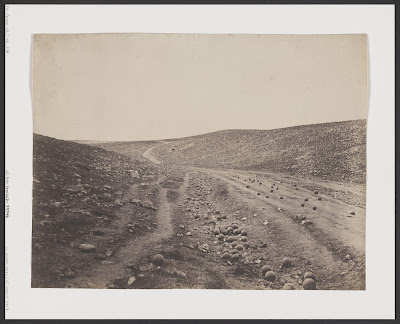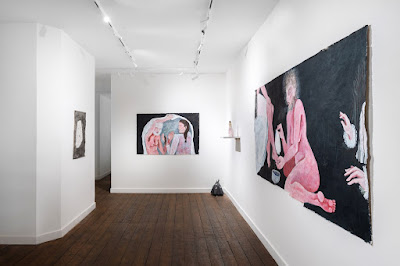The Pain of Others at DOX Centre, Prague
The 24-hour news cycle: perhaps one of the most significant markers of the twenty-first century, with psychological and emotional repercussions that most would never have anticipated. It is rarely something we actively complain about, but can feel like a gnawing, screaming noise that fades into the periphery of our minds, into the background of our days. In penetrating our domestic and otherwise private spaces, vis-a-vis mobile phone alerts and the television screen, suddenly the devastation afflicting each corner of the world arrives at our fingertips, with no guidance as to how to process this information in a way that is sensitive and caring yet sustainable. Of course the news cycle can be a resource, but the billionaire individuals and conglomerates running the agenda present further degrees of anxiety with political biases and an unblinking willingness to regurgitate traumatic imagery.
Ultimately, the very notion of an endless news cycle tricks our imagination into believing we have the emotional and temporal capacity to register the (often nuanced) trauma and pain of every person on the planet, or at the very least every group of people. This is not possible, and we cannot keep up with the sheer volume of information that is presented to us. As we move towards a need to advocate for each other under increasingly inhospitable social and living conditions, it is undeniably important to have a foundational understanding of that which is happening away from our own respective geographies and cultures, especially if we are to make progress in the practical applications of caregiving.
But how much external pain can we realistically take on, and how much of our own pain can we meaningfully communicate to others, amidst highly stigmatised narratives around physical and mental illness, as well as trauma responses? DOX Centre for Contemporary Art in Prague, Czechia, is hosting a group exhibition, The Pain of Others, employing a direct and unapologetic attitude to addressing pain in the context of "horror and atrocity", based on the text Regarding the Pain of Others by Susan Sontag. This sharp, direct delivery succeeds where the recent blockbuster exhibition The Horror Show! at Somerset House in London, fell short, with a big-budget, spectacle aesthetic that faltered with substance and continuity. DOX's space, the largest of its kind in Czechia, is impressive, but the subject matter is so dark, concentrated and steeped in often an almost journalistic storytelling quality, that at times the walls feel as if they are creeping in.
The way The Pain of Others has been curated is smart and viewer-friendly, predominantly in terms of moderating the graphic imagery that runs through the show. Placing disturbing pieces first would certainly produce a premature affect, and present a message of employing a shock factor rather than sensitive, considered viewing. Starting quietly, DOX's first space houses works including Valley of the Shadow of Death by Roger Fenton from 1855, showing a desolate landscape in the Crimea at the height of the war. Given the sort of war imagery we are now accustomed to, almost two hundred years on from Fenton's piece, the visual silence of the photographic image is palpable. Gerhard Richter's Uncle Rudi shares the space, an oil painting by a young Richter, based on a photograph of the artist's uncle, taken shortly before he died. The blurred aesthetic is rather sinister and suggests life and movement, which is at odds with both the original medium of photography, and the deceased subject matter.
One of the first significantly sobering moments of The Pain of Others comes courtesy of Iraqi artist and filmmaker Ali Arkady. With his own story of fleeing war and seeking refuge in Europe, as well as winning acclaim and awards for his documentation of war crimes, the authorship and motive of the work feels reliable, authentic, sensitive and powerful. His installation, Between Two Memories, is anchored by footage of communities fleeing war zones in Iraq and Ukraine concurrently. A clear, pure simplicity in spite of the reality of two complex situations on political and personal levels, is part of what makes the film and sculptural installation so poignant, highlighting the humanity that transcends borders and geographies.
Rightly, Between Two Memories has its own dedicated space, and acts as something of a pause in the exhibition. We all recognise that the average attention span has plummeted in recent years, so it is a clever, and necessary, device to forge a space that forces the viewer to either stand or sit still, albeit for a short amount of time.
At the heart of The Pain of Others lies a fundamental question about how we view, perceive and feel humanity. Ultimately, war is tied incredibly closely to social matters being battled today: racism, xenophobia, anti-semitism, pandemics, etc., and the question of "whose pain matters?" is unspoken yet prevalent. Ubiquitous systems such as capitalism shape the narrative around care between being gendered as feminised, unpaid labour, and entirely ignored as someone else's responsibility. Given the circle of life, this is both a naive and terrifying outlook to have on wellbeing and care. Sontag's text is an essential read if the themes here have engaged you, as she outlines her thinking in that "no "we" should be taken for granted when the subject is looking at other people's pain", and perhaps DOX's curators have believed that images of war will be received universally.
Although incredibly well researched and ordered, a visual litany of war imagery runs the risk of neutralising the experience and cancelling out the potency of the consecutive works. I must say, however, this was not the case for me, and I found the exhibition to be challenging at times. To be sure, the majority of people, especially those visiting the exhibition, will believe war to be abhorrent; referring to Virginia Woolf, Sontag's assertion that "not to be pained by these pictures [of war], not to recoil from them, not to strive to abolish what causes this havoc, this carnage - these...would be the reactions of a moral monster." But now we must transcend mere disdain for war and pain; how might an exhibition generate empathy in a wide manner? Thinking of the words of author Brené Brown, in that "in order to empathise with someone's experience, you must be willing to believe them as they see it, and not how you imagine their experience to be," perhaps we underestimate the power and authorship present in The Pain of Others. After all, we are being told real stories of pain in unambiguous ways; how we navigate and act upon our response is now up to us.








